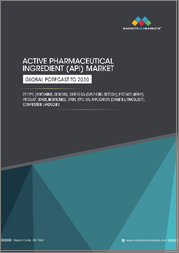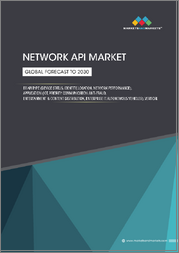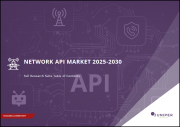
|
시장보고서
상품코드
1494866
고효능 원료의약품(HPAPI) 시장 예측(-2030년) : 제품별, 제조업체별, 약물 유형별, 용도별, 지역별 세계 분석High Potency Active Pharmaceutical Ingredient (HPAPI) Market Forecasts to 2030 - Global Analysis By Product (Biologic, Biosimilar and Biotech), Manufacturer (Outsourced/ Contract and In-House (Captive)), Drug Type, Application and By Geography |
||||||
Stratistics MRC에 따르면, 세계 고효능 원료의약품(HPAPI) 시장은 2024년 345억 1,000만 달러로 예측 기간 동안 연평균 11.7% 성장하여 2030년에는 670억 2,000만 달러에 달할 것으로 예상됩니다.
고효능 원료의약품은 극히 적은 용량으로 생물학적 활성을 나타내는 화합물입니다. 인간 게놈이 그려진 후, 항암제는 명확한 암뿐만 아니라 환자별로 제조되기 시작했습니다. 전 세계 고활성 원료의약품은 크게 제네릭 HPAPI와 혁신 HPAPI로 나뉩니다. 제네릭 HPAPI는 과거 화학 특허로 보호받았던 의약품과 동일한 화학제품을 포함하고 있는 반면, 혁신 HPAPI는 다른 화학 분자를 포함하고 있습니다.
알츠하이머병협회에 따르면, 미국 내 65세 이상 알츠하이머병 환자는 약 620만 명에 달하며, 2050년까지 1,270만 명으로 증가할 것으로 예상됩니다.
암 발병률의 증가
HPAPI는 매우 효과적인 약리학적 활성 성분으로, HPAPI는 매우 특이적으로 작용하여 낮은 일일 치료 용량으로도 큰 효과를 발휘하며, HPAPI는 정확한 질병 세포를 표적으로 삼는 능력이 있어 고활성 약물의 제형에 사용되며, HPAPI의 표적 방출 특성으로 인해 HPAPI는 암 표적 치료에 주요 응용 분야를 찾는다, HPAPI는 암 표적 치료에서 주요한 용도를 찾을 수 있습니다. 전 세계적으로 암 발생률이 눈에 띄게 증가하고 있습니다. 이러한 암 환자 수의 증가는 전 세계 항암제 판매에 큰 영향을 미치고 있습니다.
다액의 초기 투자
HPAPI는 세포 독성이 있기 때문에 취급에 큰 어려움이 있고, 직원들의 노출을 방지하기 위해 특별한 격리 시설을 도입하기 위해 많은 투자가 필요하며, HPAPI 시장은 신흥 성장 시장이지만, 제약사들은 저약리활성 또는 중약리활성 원료만 취급할 수 있는 기존 시설을 업그레이드하는 데 큰 어려움을 겪고 있습니다. 시설을 업그레이드하는 데 큰 어려움을 겪고 있습니다. 계약 제조업체는 일반 GMP 제조 시설과는 별도로 HPAPI 생산 전용으로 설계된 새로운 시설 건설에 많은 투자를 필요로 합니다.
신흥지역 동향
인도, 중국, 중동과 같은 신흥 경제 국가는 HPAPI 시장에 진입하는 기업들에게 높은 성장 기회를 제공하고 있습니다. 이들 지역 대부분은 인구가 많고, 번영을 누리고 있으며, 수명이 길어지고 있기 때문에 향후 몇 년 동안 높은 성장률을 보일 것으로 예상됩니다. 근골격계 질환, 녹내장, 특히 암과 같은 질병은 전 세계 사람들의 건강 상태에 큰 영향을 미치고 있으며, 신흥국에서는 상대적으로 높은 성장률을 보이고 있습니다.
업계 표준의 끊임없는 진화
이 시장에 진입하는 기업, 특히 HPAPI 제조 서비스를 제공하는 CMO가 직면한 큰 과제 중 하나는 업계 표준, 기술 및 규제의 지속적인 진화입니다. 이 시장에 진입하려는 기업은 이러한 새로운 기술을 채택해야 하며, 일반적으로 막대한 투자가 필요합니다. 예를 들어, SAFC(미국)는 미국 HPAPI 제조 시설을 업그레이드하여 감도와 검출 수준이 향상된 보다 강력한 분석 기술을 도입하여 10억 분의 1 수준의 잠재적 원약 이월을 판단할 수 있도록 업그레이드해야 했습니다.
COVID-19의 영향:
COVID-19 사태는 고효능 원료의약품(HPAPI) 시장에 큰 영향을 미쳤습니다. 효과적인 치료법과 백신에 대한 수요가 급증하면서 HPAPI를 포함한 제약 부문의 투자와 생산능력이 증가했습니다. 초기에는 공급망 혼란과 폐쇄 조치로 인해 지연과 부족이 발생하여 어려움을 겪었습니다. 그러나 이 위기는 기술 발전과 규제 당국의 승인을 가속화하여 HPAPI 제조의 혁신과 효율성을 촉진했습니다.
예측 기간 동안 암 분야가 가장 큰 비중을 차지할 것으로 예상됩니다.
암 분야는 암 치료에 사용되는 HPAPI의 양이 많기 때문에 시장에서 가장 큰 점유율을 차지하고 있습니다. 암 유병률의 증가는 HPAPI의 수요를 증가시키는 주요 요인입니다. 또한, 호르몬 장애, 녹내장 등 다른 치료 용도에 비해 암에 대한 수요 증가와 최근 표적 치료 동향이 암 분야 개발 증가의 주요 요인으로 작용하고 있습니다.
예측 기간 동안 합성 부문이 가장 높은 CAGR을 기록할 것으로 예상됩니다.
합성 HPAPI 시장의 빠른 성장 속도는 이러한 분자가 매우 낮은 용량으로 다양한 질병을 치료하는 데 매우 효과적이기 때문입니다. 또한 많은 합성 분자가 향후 몇 년 동안 특허를 잃을 것으로 예상되어 시장 성장을 촉진하고 있습니다. 일본 정부는 전체 의료 비용과 환자의 경제적 부담을 줄이기 위해 제네릭 의약품의 활용을 옹호하고 있습니다.
가장 큰 점유율을 차지하는 지역
북미는 선진화된 제약 인프라, 엄격한 규제 기준, R&D에 대한 막대한 투자로 인해 고효능 원료의약품(HPAPI) 시장에서 가장 큰 시장 점유율을 차지할 것으로 예상됩니다. 이 지역에는 주요 제약사 및 위탁생산(CMO)이 존재하여 시장 성장을 더욱 촉진하고 있습니다. 또한, 만성 질환의 유병률 증가와 표적 암 치료제에 대한 수요 증가로 HPAPI의 필요성이 높아지면서 북미의 시장 주도권을 강화하고 있습니다.
CAGR이 가장 높은 지역:
고령 인구 증가, 만성질환 및 생활습관병의 높은 유병률, 가처분 소득 증가, 생활습관병 및 노화 관련 질환의 유병률, 정부의 의료 개혁 노력, 제네릭 의약품 채택 촉진 등으로 인해 아시아태평양이 가장 높은 CAGR을 보일 것으로 예상됩니다. 낮은 인건비와 제조 비용으로 인해 이 지역 제약사들의 시장 확대가 아시아 시장의 성장을 주도하고 있습니다.
무료 커스터마이징 서비스
이 보고서를 구독하는 고객은 다음과 같은 무료 맞춤화 옵션 중 하나를 이용할 수 있습니다.
- 기업 개요
- 추가 시장 진입 기업의 종합적인 프로파일링(최대 3개사)
- 주요 기업 SWOT 분석(최대 3개사)
- 지역 세분화
- 고객의 관심에 따른 주요 국가별 시장 추정, 예측, CAGR(주: 타당성 검토에 따른)
- 경쟁사 벤치마킹
- 제품 포트폴리오, 지리적 입지, 전략적 제휴에 따른 주요 기업 벤치마킹
목차
제1장 주요 요약
제2장 서문
- 개요
- 이해관계자
- 조사 범위
- 조사 방법
- 데이터 마이닝
- 데이터 분석
- 데이터 검증
- 조사 접근법
- 조사 정보 출처
- 1차 조사 정보 출처
- 2차 조사 정보 출처
- 가정
제3장 시장 동향 분석
- 소개
- 성장 촉진요인
- 성장 억제요인
- 기회
- 위협
- 제품 분석
- 용도 분석
- 신흥 시장
- COVID-19의 영향
제4장 Porter's Five Forces 분석
- 공급 기업의 교섭력
- 구매자의 교섭력
- 대체품의 위협
- 신규 참여업체의 위협
- 경쟁 기업 간의 경쟁 관계
제5장 세계의 고효능 원료의약품(HPAPI) 시장 : 제품별
- 소개
- 생물학적
- 바이오시밀러
- 합성
- 바이오테크놀러지
- 백신
- 재조합 단백질
- 단클론항체
제6장 세계의 고효능 원료의약품(HPAPI) 시장 : 제조업체별
- 소개
- 아웃소싱/계약
- 사내(캡티브)
제7장 세계의 고효능 원료의약품(HPAPI) 시장 : 약물 유형별
- 소개
- 혁신적/참신
- 제네릭
제8장 세계의 고효능 원료의약품(HPAPI) 시장 : 용도별
- 소개
- 대사장애
- 호르몬장애
- 중추신경계 질환
- 녹내장
- 감염증
- 염증
- 근골격약
- 종양학
- 호흡기질환
- 발기부전
- 미용
- 심혈관제
- 항당뇨병제
- 기타
제9장 세계의 고효능 원료의약품(HPAPI) 시장 : 지역별
- 소개
- 북미
- 미국
- 캐나다
- 멕시코
- 유럽
- 독일
- 영국
- 이탈리아
- 프랑스
- 스페인
- 기타 유럽
- 아시아태평양
- 일본
- 중국
- 인도
- 호주
- 뉴질랜드
- 한국
- 기타 아시아태평양
- 남미
- 아르헨티나
- 브라질
- 칠레
- 기타 남미
- 중동 및 아프리카
- 사우디아라비아
- 아랍에미리트
- 카타르
- 남아프리카공화국
- 기타 중동 및 아프리카
제10장 주요 개발
- 계약, 파트너십, 협업, 합작투자
- 인수와 합병
- 신제품 발매
- 사업 확대
- 기타 주요 전략
제11장 기업 개요
- Abbvie
- Alkermes plc
- Bristol-Myers Squibb
- Cambrex Corporation
- Corden Pharma International
- Dr. Reddy's Laboratories
- Eli Lilly and Company
- F. Hoffmann-La Roche
- Lonza Group
- Merck KGaA
- Novartis AG
- Novasep
- Pfizer
- Sanofi
- Sigma-Aldrich Co LLC
- SK Biotek
- Sun Pharmaceutical Industries Ltd
- Teva Pharmaceutical Industries
- Thermo Fisher Scientific Inc.
- Viatris Inc.
- WuXi AppTec
According to Stratistics MRC, the Global High Potency Active Pharmaceutical Ingredient (HPAPI) Market is accounted for $34.51 billion in 2024 and is expected to reach $67.02 billion by 2030 growing at a CAGR of 11.7% during the forecast period. High potency active pharmaceutical ingredients are biologically active compounds that exhibit biological activity at extremely low dose levels. After the human genome was depicted, cancer drugs were produced not only for distinct cancer but also for different patients. The global high potency active ingredient is classified as Generic HPAPI and Innovative HPAPI. The generic HPAPI involve the same chemical agent as a drug that was once secured by chemical patent claims Whereas, Innovative HPAPI involves different chemical molecule.
According to the Alzheimer's Association, roughly 6.2 Million people in the United States over the age of 65 have Alzheimer's dementia, with the number expected to rise to 12.7 Million by 2050.
Market Dynamics:
Driver:
Increasing incidence of cancer
HPAPIs are extremely effective pharmacologically active ingredients. They are highly specific in their action and offer significant efficiency even at low daily therapeutic doses. HPAPIs have the ability to target precise disease cells and are, hence, used in formulations for highly potent drugs. Owing to their target release characteristics, HPAPIs find major applications in target therapies for cancer. Globally, there is a significant growth in the incidence of cancer. This growth in the number of cancer cases has a tremendous impact on the sales of cancer drugs across the globe.
Restraint:
Large initial investments
The cytotoxic nature of HPAPIs presents significant handling challenges and thus requires heavy investments for implementing specialized containment facilities that facilitate the safety of employees from exposure. Although the HPAPIs market is an emerging and growing market, pharmaceutical manufacturers face significant challenges in upgrading their existing facilities that are capable of handling only low- or medium-potency APIs. Contract manufacturers are required to heavily invest in building new facilities that are designed specifically for HPAPI manufacturing apart from the usual GMP production facilities.
Opportunity:
Developments in emerging regions
Developing economies such as India, China, and the Middle East presents high growth opportunities for players in the HPAPIs market. In most of these geographies, the market is expected to show a high growth rate in the coming years owing to their huge population, increasing prosperity, and improving longevity. Diseases like musculoskeletal diseases, glaucoma, and specifically cancer have a significant impact on the health status of people worldwide, with comparatively higher growth rates in developing countries.
Threat:
Continual evolution of industry standards
One of the major challenges faced by the players in this market, especially CMOs that offer HPAPI manufacturing services, is the continual evolution of industry standards, technologies, and regulations. Companies that are willing to enter this marker are required to adopt these newer technologies, which generally translates to huge investments. For instance, SAFC (US) had to upgrade its HPAPI manufacturing facility in the US to include more robust analytical technologies with improved sensitivity and detection levels that allow for the determination of potential API carryover at part-per-billion levels.
Covid-19 Impact:
The COVID-19 pandemic significantly impacted the high-potency active pharmaceutical ingredient (HPAPI) market. The surge in demand for effective treatments and vaccines led to increased investment and production capacity in the pharmaceutical sector, including HPAPIs. Supply chain disruptions and lockdown measures initially posed challenges, causing delays and shortages. However, the crisis also accelerated technological advancements and regulatory approvals, fostering innovation and efficiency in HPAPI manufacturing.
The oncology segment is expected to be the largest during the forecast period
The oncology segment has the largest share of the market because of the greater amount of HPAPIs found in oncology drugs. The rising prevalence of cancer is a major factor driving up demand for HPAPI. And also, some of the factors like rising demand for cancer and initiate of recent target therapy are the main cause of the increase in the development of oncology as compared to other therapeutic applications such as hormonal disorder and glaucoma.
The synthetic segment is expected to have the highest CAGR during the forecast period
The synthetic HPAPI market is growing at a faster rate because, at very low doses, these molecules are very effective in the treatment of a variety of diseases. Many synthetic molecules are also predicted to lose their patents in the years ahead, boosting market growth. The Japanese government has been advocating for the utilize of generic medicines in lowering the overall healthcare costs and the economic burden placed on patients
Region with largest share:
North America is projected to hold the largest market share in the High Potency Active Pharmaceutical Ingredient (HPAPI) market due to its advanced pharmaceutical infrastructure, stringent regulatory standards, and significant investments in R&D. The presence of key pharmaceutical companies and contract manufacturing organizations (CMOs) in the region further drives market growth. Additionally, the increasing prevalence of chronic diseases and the demand for targeted cancer therapies boost the need for HPAPIs, reinforcing North America's leading position in the market.
Region with highest CAGR:
Asia Pacific is projected to have the highest CAGR due to the growth in geriatric population, high prevalence of chronic and lifestyle diseases, increase in disposable income, prevalence of lifestyle- and age-related diseases, government efforts to reform healthcare and encourage the adoption of generics. The growing market for merchant manufacturers in this region is attributed to the low labour and manufacturing costs are driving the growth of the market in Asia.
Key players in the market
Some of the key players in High Potency Active Pharmaceutical Ingredient (HPAPI) market include Abbvie, Alkermes plc, Bristol-Myers Squibb, Cambrex Corporation, Corden Pharma International, Dr. Reddy's Laboratories, Eli Lilly and Company, F. Hoffmann-La Roche, Lonza Group, Merck KGaA, Novartis AG, Novasep, Pfizer, Sanofi, Sigma-Aldrich Co LLC, SK Biotek, Sun Pharmaceutical Industries Ltd, Teva Pharmaceutical Industries, Thermo Fisher Scientific Inc., Viatris Inc. and WuXi AppTec
Key Developments:
In May 2024, Alkermes plc has completed the previously announced sale of its development and manufacturing facility in Athlone, Ireland to Novo Nordisk. In connection with the closing of the transaction, Alkermes will receive a one-time cash payment for the facility and certain related assets of approximately $91 million.
In April 2024, Bio-Techne Corporation announced a significant milestone in its commitment to providing cutting-edge solutions to its customers. Effective May 1, 2024, Bio-Techne will enter into a strategic distribution agreement with Thermo Fisher Scientific, a leading provider of laboratory products and services, in Europe. This partnership marks an important collaboration between two industry leaders in the fields of scientific research, diagnostics, and biotechnology.
Products Covered:
- Biologic
- Biosimilar
- Synthetic
- Biotech
Manufacturers Covered:
- Outsourced/ Contract
- In-House (Captive)
Drug Types Covered:
- Innovative/Novel
- Generic
Applications Covered:
- Metabolic Disorders
- Hormonal Disorders
- Central Nervous System Disorders
- Glaucoma
- Infectious Diseases
- Inflammation
- Musculoskeletal Drugs
- Oncology
- Respiratory Disorders
- Erectile Dysfunction
- Cosmetology
- Cardiovascular Drugs
- Anti-Diabetic Drugs
- Other Applications
Regions Covered:
- North America
- US
- Canada
- Mexico
- Europe
- Germany
- UK
- Italy
- France
- Spain
- Rest of Europe
- Asia Pacific
- Japan
- China
- India
- Australia
- New Zealand
- South Korea
- Rest of Asia Pacific
- South America
- Argentina
- Brazil
- Chile
- Rest of South America
- Middle East & Africa
- Saudi Arabia
- UAE
- Qatar
- South Africa
- Rest of Middle East & Africa
What our report offers:
- Market share assessments for the regional and country-level segments
- Strategic recommendations for the new entrants
- Covers Market data for the years 2022, 2023, 2024, 2026, and 2030
- Market Trends (Drivers, Constraints, Opportunities, Threats, Challenges, Investment Opportunities, and recommendations)
- Strategic recommendations in key business segments based on the market estimations
- Competitive landscaping mapping the key common trends
- Company profiling with detailed strategies, financials, and recent developments
- Supply chain trends mapping the latest technological advancements
Free Customization Offerings:
All the customers of this report will be entitled to receive one of the following free customization options:
- Company Profiling
- Comprehensive profiling of additional market players (up to 3)
- SWOT Analysis of key players (up to 3)
- Regional Segmentation
- Market estimations, Forecasts and CAGR of any prominent country as per the client's interest (Note: Depends on feasibility check)
- Competitive Benchmarking
- Benchmarking of key players based on product portfolio, geographical presence, and strategic alliances
Table of Contents
1 Executive Summary
2 Preface
- 2.1 Abstract
- 2.2 Stake Holders
- 2.3 Research Scope
- 2.4 Research Methodology
- 2.4.1 Data Mining
- 2.4.2 Data Analysis
- 2.4.3 Data Validation
- 2.4.4 Research Approach
- 2.5 Research Sources
- 2.5.1 Primary Research Sources
- 2.5.2 Secondary Research Sources
- 2.5.3 Assumptions
3 Market Trend Analysis
- 3.1 Introduction
- 3.2 Drivers
- 3.3 Restraints
- 3.4 Opportunities
- 3.5 Threats
- 3.6 Product Analysis
- 3.7 Application Analysis
- 3.8 Emerging Markets
- 3.9 Impact of Covid-19
4 Porters Five Force Analysis
- 4.1 Bargaining power of suppliers
- 4.2 Bargaining power of buyers
- 4.3 Threat of substitutes
- 4.4 Threat of new entrants
- 4.5 Competitive rivalry
5 Global High Potency Active Pharmaceutical Ingredient (HPAPI) Market, By Product
- 5.1 Introduction
- 5.2 Biologic
- 5.3 Biosimilar
- 5.4 Synthetic
- 5.5 Biotech
- 5.5.1 Vaccines
- 5.5.2 Recombinant Proteins
- 5.5.3 Monoclonal Antibodies
6 Global High Potency Active Pharmaceutical Ingredient (HPAPI) Market, By Manufacturer
- 6.1 Introduction
- 6.2 Outsourced/ Contract
- 6.3 In-House (Captive)
7 Global High Potency Active Pharmaceutical Ingredient (HPAPI) Market, By Drug Type
- 7.1 Introduction
- 7.2 Innovative/Novel
- 7.3 Generic
8 Global High Potency Active Pharmaceutical Ingredient (HPAPI) Market, By Application
- 8.1 Introduction
- 8.2 Metabolic Disorders
- 8.3 Hormonal Disorders
- 8.4 Central Nervous System Disorders
- 8.5 Glaucoma
- 8.6 Infectious Diseases
- 8.7 Inflammation
- 8.8 Musculoskeletal Drugs
- 8.9 Oncology
- 8.10 Respiratory Disorders
- 8.11 Erectile Dysfunction
- 8.12 Cosmetology
- 8.13 Cardiovascular Drugs
- 8.14 Anti-Diabetic Drugs
- 8.15 Other Applications
9 Global High Potency Active Pharmaceutical Ingredient (HPAPI) Market, By Geography
- 9.1 Introduction
- 9.2 North America
- 9.2.1 US
- 9.2.2 Canada
- 9.2.3 Mexico
- 9.3 Europe
- 9.3.1 Germany
- 9.3.2 UK
- 9.3.3 Italy
- 9.3.4 France
- 9.3.5 Spain
- 9.3.6 Rest of Europe
- 9.4 Asia Pacific
- 9.4.1 Japan
- 9.4.2 China
- 9.4.3 India
- 9.4.4 Australia
- 9.4.5 New Zealand
- 9.4.6 South Korea
- 9.4.7 Rest of Asia Pacific
- 9.5 South America
- 9.5.1 Argentina
- 9.5.2 Brazil
- 9.5.3 Chile
- 9.5.4 Rest of South America
- 9.6 Middle East & Africa
- 9.6.1 Saudi Arabia
- 9.6.2 UAE
- 9.6.3 Qatar
- 9.6.4 South Africa
- 9.6.5 Rest of Middle East & Africa
10 Key Developments
- 10.1 Agreements, Partnerships, Collaborations and Joint Ventures
- 10.2 Acquisitions & Mergers
- 10.3 New Product Launch
- 10.4 Expansions
- 10.5 Other Key Strategies
11 Company Profiling
- 11.1 Abbvie
- 11.2 Alkermes plc
- 11.3 Bristol-Myers Squibb
- 11.4 Cambrex Corporation
- 11.5 Corden Pharma International
- 11.6 Dr. Reddy's Laboratories
- 11.7 Eli Lilly and Company
- 11.8 F. Hoffmann-La Roche
- 11.9 Lonza Group
- 11.10 Merck KGaA
- 11.11 Novartis AG
- 11.12 Novasep
- 11.13 Pfizer
- 11.14 Sanofi
- 11.15 Sigma-Aldrich Co LLC
- 11.16 SK Biotek
- 11.17 Sun Pharmaceutical Industries Ltd
- 11.18 Teva Pharmaceutical Industries
- 11.19 Thermo Fisher Scientific Inc.
- 11.20 Viatris Inc.
- 11.21 WuXi AppTec



















